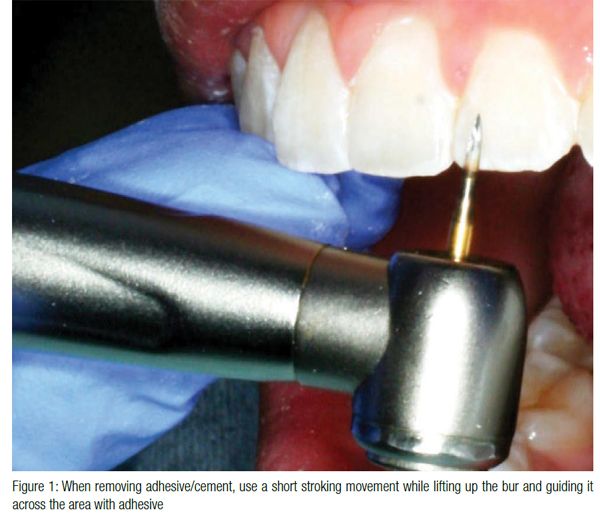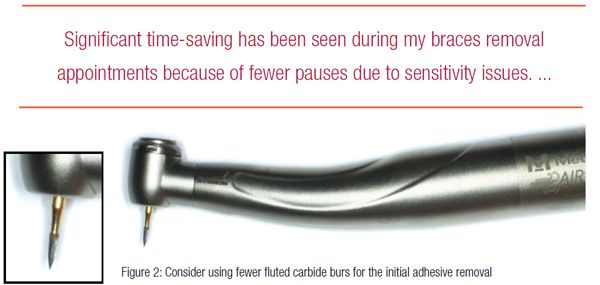Dr. David A. Chenin discusses the advantages of an air-free handpiece
With the excitement that their orthodontic treatment is complete, many patients dread the actual braces removal procedure. How can you make one simple change to revolutionize patients’ experience for braces removal? Don’t use a handpiece that expels ice-cold air on their teeth!

[userloggedin]
With traditional handpieces, this patient sensitivity is especially true in orthodontics, where the teeth are not anesthetized, have enlarged PDLs, and as a result, are more cold-air reactive with sensitivity from recent orthodontic tooth movement. Medidenta’s 90-degree handpiece does NOT expel air from the head of the handpiece. Instead, the air is directed out of the rear of the handpiece away from the patient. Thus, the Air-Free 90 degree has become my favorite handpiece ever.
 It’s also important to note that this powerful titanium-coated handpiece is built rock solid and generates an ultra-smooth high-speed polishing action. As a result, vibrations on the tooth surface are eliminated making for a more comfortable experience as compared to traditional handpieces.
It’s also important to note that this powerful titanium-coated handpiece is built rock solid and generates an ultra-smooth high-speed polishing action. As a result, vibrations on the tooth surface are eliminated making for a more comfortable experience as compared to traditional handpieces.
Here are some tips for using the Air-Free handpiece:
- When removing adhesive/cement, use a short stroking movement while lifting up the bur and guiding it across the area with adhesive. This allows the tooth to cool and is the single most important control factor to reduce any heat generated. Letting off the rheostat as you move from tooth to tooth is also very helpful.
- Avoid stone burs for complete removal of adhesive due to heat buildup.
- Less friction and heat is generated with carbide burs.
- Consider using fewer fluted carbide burs for the initial adhesive removal (e.g., 12 fluted) and then using a higher fluted bur (e.g., 30 fluted carbide) gently across the upper anterior teeth as the last step to eliminate bur marks and to give high luster and shine.
- Know your bur design: Spiral flutes are designed to give a smoother finish and act as if they had more flutes. This tends to increase surface area/friction and generate a little more heat and remove adhesive a little more slowly. Straight fluted burs (compared to the same number of flutes in a spiral fluting design) will remove the adhesive more quickly because of how the flutes are spaced apart and result in less heat generation and time-savings, but they do not have as smooth as a finish.
- To further control cold or heat, suction closer or farther from the tooth depending on patient feedback.
Significant time-saving has been seen during my braces removal appointments because of fewer pauses due to sensitivity issues, and a much better patient experience is the result.
[/userloggedin]
[userloggedout][/userloggedout]
Stay Relevant With Orthodontic Practice US
Join our email list for CE courses and webinars, articles and mores

 David A. Chenin, DDS, MSD, is a Diplomate of the American Board of Orthodontics, a member of the Schulman Study Group, and an Adjunct Orthodontic Faculty member at the University of the Pacific School of Dentistry.
David A. Chenin, DDS, MSD, is a Diplomate of the American Board of Orthodontics, a member of the Schulman Study Group, and an Adjunct Orthodontic Faculty member at the University of the Pacific School of Dentistry.
